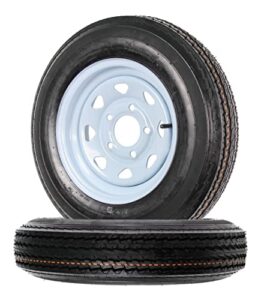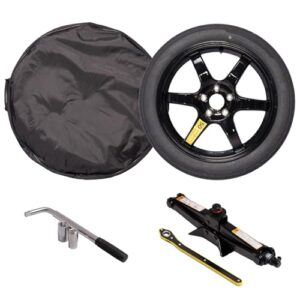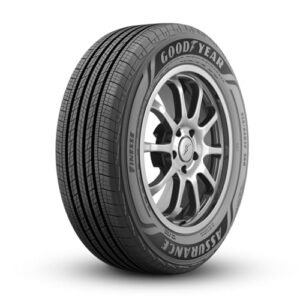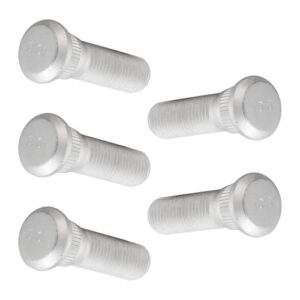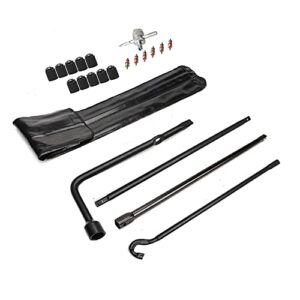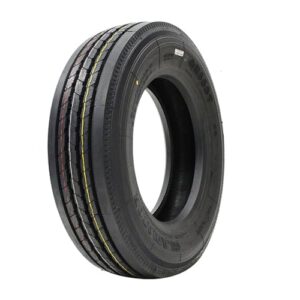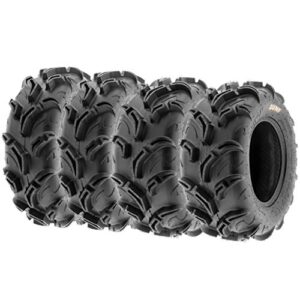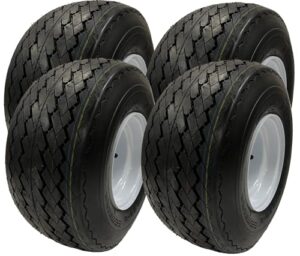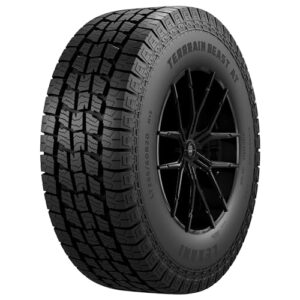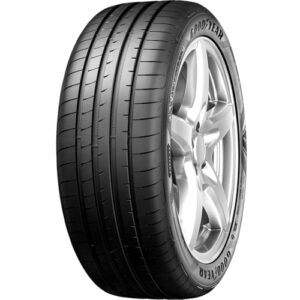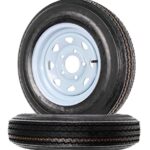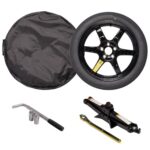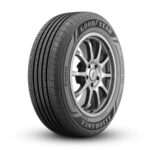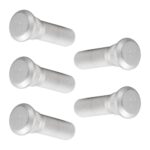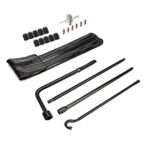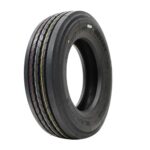The average car tire weighs between 20 to 25 pounds. Truck tires can tip the scales at up to 80 pounds.
Selecting the right tires for your vehicle involves more than just size and tread pattern. Weight is a crucial factor that impacts vehicle performance, fuel efficiency, and handling. When shopping for tires, it’s essential to understand that the weight can vary based on the tire type, size, and the materials used in construction.
Lighter tires can enhance acceleration and reduce strain on the engine, while heavier tires might offer better durability and load-carrying capacity. It’s a balance that vehicle owners must weigh, no pun intended, to ensure their ride meets their driving needs without compromising safety or performance. Knowing the weight of a tire can also be pivotal when considering shipping costs for tire purchases made online, or when planning to carry a spare. Thereby, whether you’re a car enthusiast, a daily commuter, or a professional hauler, being aware of tire weight is a small but significant detail in the grand scheme of automotive maintenance and performance.

Introduction To Tire Weight: Understanding The Basics
Knowledge of tire weight proves essential for vehicle owners. Tires play a pivotal role in vehicle performance, safety, and efficiency. By understanding the basics of tire weight, drivers can make informed choices about their vehicles’ tires, thus ensuring optimal operation and longevity.
The Importance Of Knowing Tire Weight
Drivers must be aware of their vehicle’s tire weight. It impacts fuel economy, handling, and wear and tear on the road. Properly balanced tires ensure smoother rides and lower the risk of premature replacements.
Factors Affecting Tire Weight
Several factors contribute to the weight of a tire. These include:
- Size: Larger tires inherently weigh more than smaller ones.
- Material: The composition of the tire, rubber, and steel belts add to the weight.
- Type: Passenger tires differ in weight from truck tires.
- Design: Features like tread patterns and sidewall thickness contribute to overall weight.
Overview Of Tire Types And Their Typical Weight Range
Different tire types serve various purposes and exhibit distinct weight ranges:
| Tire Type | Typical Weight Range |
|---|---|
| Passenger Car Tires | 20-25 lbs |
| SUV Tires | 25-30 lbs |
| Truck Tires | 35-80 lbs |
| Performance Tires | 20-30 lbs |
This table outlines an average range; specific models may vary.
The Different Categories Of Tires And Their Weights
Understanding tire weights is crucial for vehicle performance and safety. Each category of tire serves a unique purpose and comes with a specific weight range. This variety serves different types of vehicles. From compact cars to heavy-duty trucks, the weight of tires can affect fuel efficiency, handling, and tire lifespan.
Passenger Car Tires: From Compact To Full-size Sedans
Passenger car tires are designed for everyday use. Here’s a quick look at their weights:
- Compact cars: weigh around 20 pounds each
- Mid-size sedans: can weigh up to 25 pounds
- Full-size sedans: often weigh between 25-30 pounds
Suv And Light Truck Tires: Balancing Durability And Weight
SUV and light truck tires bridge the gap between stability and heft.
| SUV Tires | Light Truck Tires |
|---|---|
| Generally range from 30-50 pounds | Can weigh between 35-80 pounds |
Heavy-duty Truck Tires: The Heavyweights Of The Road
Heavy-duty truck tires are the behemoths, built for load and endurance:
- Semi trucks: tires can weigh over 110 pounds
- Construction vehicles: tires might exceed 200 pounds
Motorcycle And Specialty Tires: Sport, Touring, And Off-road
Weighing less, motorcycle and specialty tires suit various riding styles:
- Sport bikes: light tires, around 10-20 pounds for agility
- Touring motorcycles: tires weigh about 20-30 pounds for comfort
- Off-road vehicles: tires vary greatly, 30 pounds and up

The Impact Of Tire Weight On Vehicle Performance
Understanding how much a tire weighs is crucial. A tire’s weight can significantly affect your car’s overall performance. From fuel efficiency to how smooth your ride feels, tires play an essential role. Let’s explore how tire weight influences different aspects of vehicle performance.
Influence Of Tire Weight On Fuel Efficiency
Heavier tires mean your engine works harder. This can lead to more fuel consumption. Lighter tires help you save gas. By choosing the right tire weight, you can enhance fuel economy.
- Increased tire weight = Increased fuel use
- Lighter tires = Better fuel savings
Tire Weight And Acceleration Dynamics
Tire weight affects acceleration. Light tires allow for quicker starts and better speed. Heavy tires may slow your car down. Choose the right tire to ensure optimal acceleration.
- Light tires = Faster acceleration
- Heavy tires = Slower pickups
Handling And Braking: The Role Of Tire Mass
A tire’s weight can affect handling and braking. Lighter tires help your car turn and stop more easily. Heavier tires may reduce your car’s agility. Balanced tire weight contributes to safer driving.
| Tire Weight | Handling | Braking |
|---|---|---|
| Light | Better | Quicker |
| Heavy | Reduced | Slower |
Wear And Tear Implications Of Heavy Versus Light Tires
Different tire weights impact wear and tear. Heavy tires might wear out parts quickly. Light tires tend to cause less stress. Selecting the right tire weight leads to longer-lasting vehicle parts.
- Heavy tires = More strain
- Light tires = Less wear
Comparing Tire Weights: A Look At Different Brands And Models
Tires come in all shapes and sizes. They differ not just in dimensions and type, but also in weight.
Why is tire weight important? It impacts vehicle performance, fuel efficiency, and handling. Here’s an insightful look at how tire weights vary across different brands and models.
Leading Tire Brands And Their Weight Characteristics
All tire brands promise quality, but their products have distinct weight characteristics. Let’s explore.
- Michelin: Known for lightweight yet durable tires, improving fuel efficiency.
- Bridgestone: Offers a balance of weight and performance for solid handling.
- Goodyear: Tends to have heavier tires that prioritize traction and longevity.
Model-specific Weight Considerations
Tire weight can vary greatly even within the same brand, depending on the model and intended use of the tire.
| Model | Weight Range |
|---|---|
| Michelin Primacy | 20-25 lbs |
| Bridgestone Turanza | 22-28 lbs |
| Goodyear Eagle | 24-30 lbs |
How To Compare Tire Weights Accurately
When comparing tire weights, use the following steps to ensure accuracy.
- Identify the tire size: The size is printed on the sidewall of the tire.
- Check the weight rating: Tire manufacturers list this information on their websites or product sheets.
- Use a reputable source: Consult automotive guides or ask a professional for precise information.
Beyond The Scale: New Technologies And Future Trends
The weight of a tire influences vehicle dynamics significantly. Forward-thinking companies continuously seek methods to shed unnecessary pounds. The industry ushers in an era where traditional designs evolve. Let’s explore state-of-the-art technologies and trends shaping the future of tire weights.
Emerging Technologies Aiming At Weight Reduction In Tires
Several innovative technologies stand at the forefront of the quest for lighter tires. These lead to improved fuel efficiency and handling. Research currently focuses on high-tech materials and manufacturing processes:
- Nanomaterials: These tiny substances enhance strength while reducing weight.
- 3D Printing: This allows for precise, layered construction, cutting excess material.
- Eco-Friendly Compounds: These offer a lighter alternative without compromising durability.
Environmental And Regulatory Impact On Tire Design
Regulations push for greener designs. This transformation reflects in tire weight reduction strategies:
| Regulation | Impact on Design |
|---|---|
| Emissions Standards | Drive demand for lighter tires, decreasing overall vehicle weight. |
| Recycling Requirements | Prompt use of sustainable, lightweight materials in tire production. |
Predicting The Future: How Tire Weights Might Change
Trends indicate that futuristic tire designs will shed weight. Anticipated breakthroughs will redefine what we expect from tires:
- Advanced Lightweight Materials: Innovations may cut tire weight by up to 20%.
- Non-Pneumatic Tires: Airless technology paves the way for more efficient designs.
- Smart Tires: Embedded sensors contribute to weight optimization.
Practical Guide To Tire Weights: Tips For Car Owners
Understanding the weight of car tires is crucial for vehicle safety and performance. This guide offers handy tips for car owners. It covers checks, selection, and maintenance of tire weights. These steps ensure smooth rides and extend tire life.
How To Check And Interpret Tire Weight Information
Every tire has a set of numbers and letters printed on its side. This code includes weight information. Here’s how you can read it:
- Locate the code on the tire sidewall.
- Find the Load Index. It’s a number linked to maximum weight each tire can handle.
- Consult a Load Index chart online to translate this number into actual weight.
| Load Index | Weight Capacity (lbs) |
|---|---|
| 91 | 1356 |
| 95 | 1521 |
| 100 | 1764 |
Selecting The Right Tire Weight For Your Vehicle
Choose tires that match your car’s capacity. Here are simple steps:
- Check the owner’s manual. Find the recommended tire specifications.
- Match the Load Index to your car’s needs, especially if you carry heavy loads.
- Ensure proper fit. Tires must fit wheels perfectly for safety and weight distribution.
Maintenance Tips: Keeping Tire Weight Consistent Over Time
Maintaining consistent tire weight is vital. It prevents uneven wear and tear. Follow these tips:
- Regularly check tire pressure. Use a gauge for accurate readings.
- Balance your tires. Unbalanced tires lead to uneven weight distribution.
- Rotate tires every 5,000 to 8,000 miles. This ensures even wear patterns.
Remember, proper weight helps tires perform at their best. Use this guide to stay on track. Safe driving starts with the right tire weight!
The Balancing Act Of Tire Weight Selection
Understanding tire weight is crucial for vehicle performance and safety.
Summarizing The Significance Of Tire Weight
Tire weight impacts fuel efficiency and handling. Lightweight tires can reduce rolling resistance, enhancing gas mileage. Yet, they must also be resilient enough to ensure durability and support. Each vehicle type has a specific tire weight range; deviating from this may compromise safety and performance.
Final Thoughts On Choosing The Right Tire For Your Needs
Selecting the ideal tire involves considering weight among other factors. Look at your vehicle’s manual, consult experts, and match tires to your driving conditions. It’s a balance of efficiency, costs, longevity, and performance needs.
The Future Landscape Of The Tire Industry In Terms Of Weight
The tire industry is steering towards eco-friendly solutions. Expect advances in materials and designs enhancing the balance between weight and performance. Lighter, stronger tires could dominate the market, propelling us towards a greener future on the roads.

Frequently Asked Questions
How Much Does A Whole Tire Weigh?
A passenger car tire typically weighs between 20 to 25 pounds, while larger truck or SUV tires can weigh 30 pounds or more.
How Much Does A 17 Inch Tire Weigh?
A 17-inch tire typically weighs between 20 to 35 pounds, depending on the tire type and brand.
How Much Does A 19 Inch Tire Weigh?
A 19-inch tire typically weighs between 25 to 35 pounds, depending on the tire’s specific design and materials used.
How Much Does An 18 Wheeler Tire Weigh?
An 18 wheeler tire typically weighs between 110 to 120 pounds.
Conclusion
Understanding tire weight is crucial for vehicle safety and performance. Different types and sizes vary, typically weighing between 20 to 35 pounds. Remember, the right tires ensure optimal efficiency and smooth rides. Keep these figures in mind when seeking replacements to maintain your car’s balance and handling.
Choose wisely for a safer journey.




